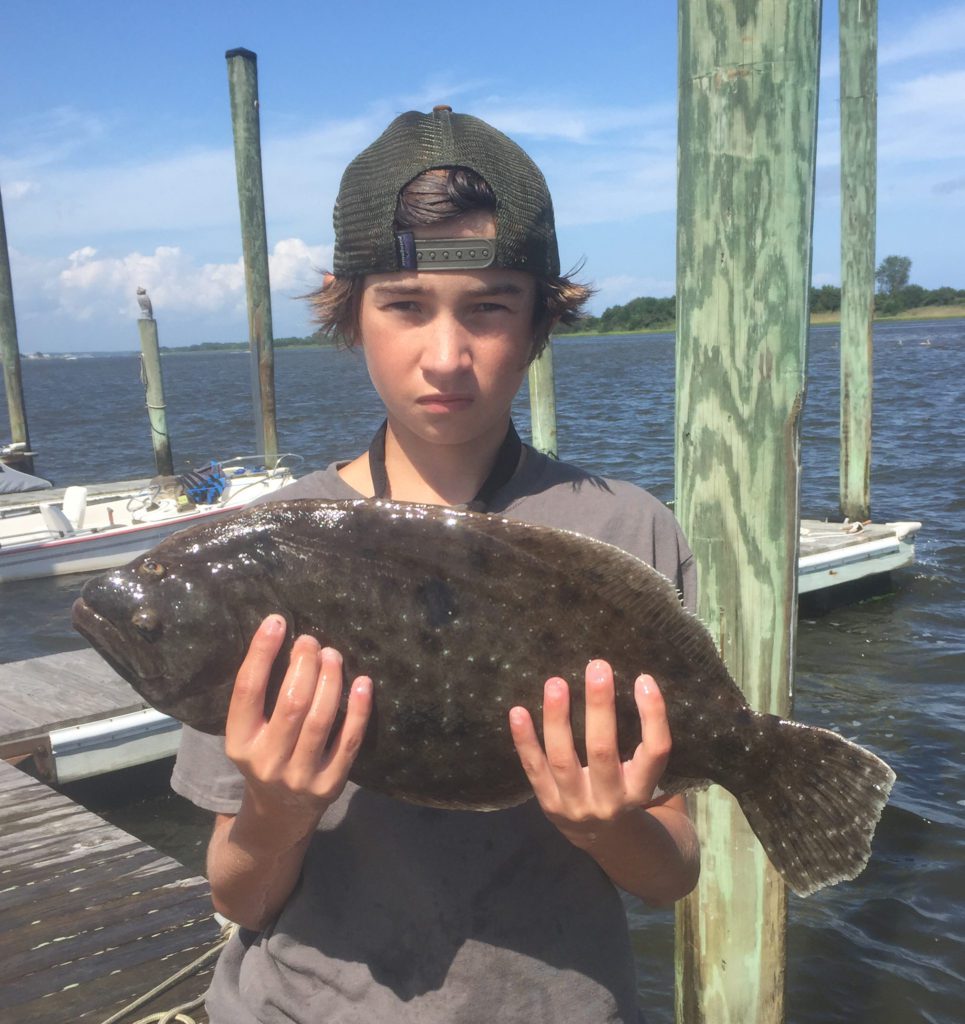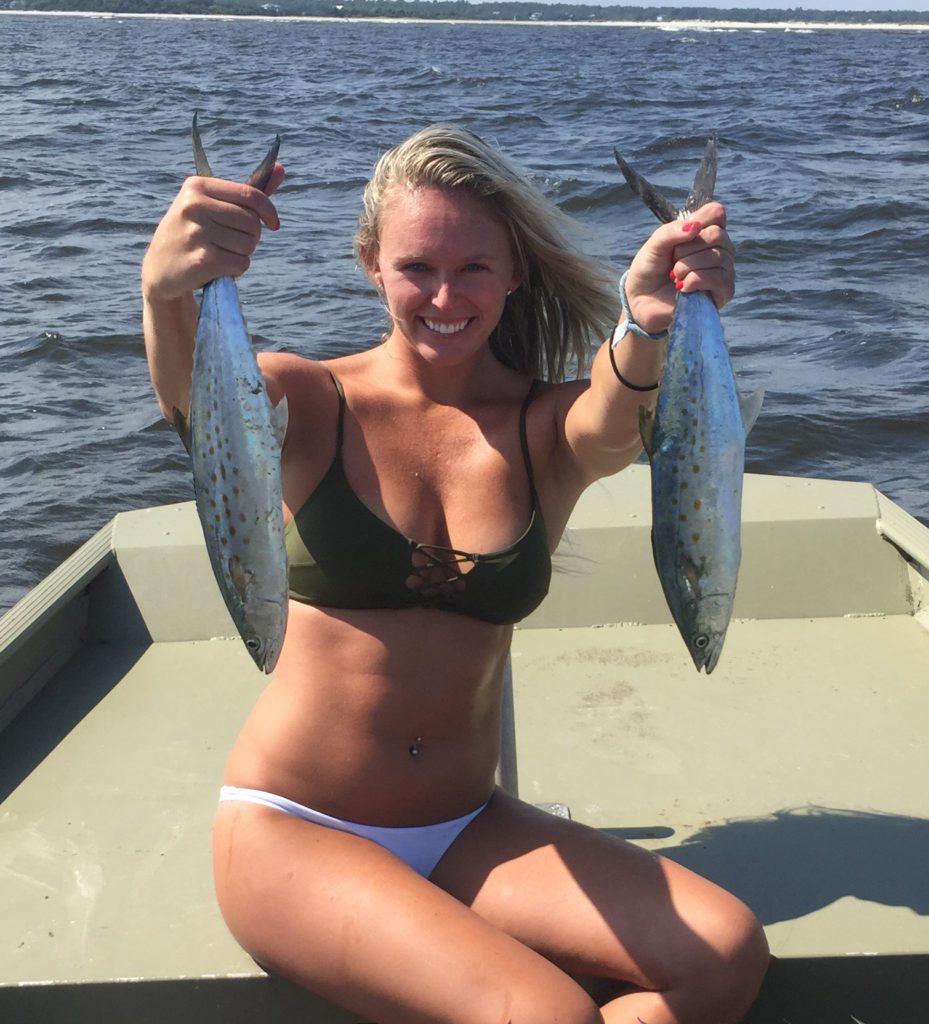Carolina Beach – September 14, 2017
Red, of Island Tackle and Hardware, reports that the inshore flounder bite has remained steady, especially around deep water docks. The Cape Fear River and the waterway have both produced solid numbers of fish. Live menhaden and finger mullet on Carolina rigs have been the best baits.
A few sheepshead and black drum are still holding on the pilings at the Snow’s Cut Bridge. Dropping live fiddler crabs has been the ticket for getting them to bite.
Redfish and trout have been feeding well along marsh banks and oyster structure. Topwater plugs have worked well early in the morning, with live finger mullet working best as the day progresses.
Anglers are hooking a few tripletail in the river. Targeting crab pot buoys with live shrimp under float rigs has been the key to getting bit.
Just off the beach, the spanish bite remains steady. Anglers trolling Clarkspoons on planers near the inlets and around bait pods have found plenty of action with fish in the 2-4 lb. range. Some smaller kings have been in the mix as well.
In the 15-25 mile range, those dropping squid and cigar minnows to the bottom have landed good numbers of black sea bass, beeliners, and grouper.
Out at the Gulf Stream, the wahoo bite is starting to heat up, with better numbers being landed daily. A mix of blackfin tuna and dolphin have also been hooked.
Christian, of Seahawk Inshore Fishing Charters, reports that the redfish bite has been steadily improving in the creeks and flats in the lower Cape Fear River. Live shrimp has been plentiful in the area and has been the bait of choice for the reds. Black drum have also been in the mix with the reds, and floating live shrimp or fishing them on a light Carolina rig has done the trick.
A few flounder have been back in the creeks. The flounder have been willing to take live shrimp or finger mullet on a Carolina rig.
Just off the beach, the spanish bite has heated up. Anglers are finding schools of fish busting on bait pods. Tossing Big Nic Spanish Candy (in pink) has been the lure of choice. A few false albacore have been mixed in as well.
The big drum have started to show up on nearshore reefs and structure. Dropping fresh cut baits or live mullet minnows have been the best baits, and anglers have landed fish in the 30-40” range.
Greg, of TopWater Guide Co., reports that speckled trout fishing in the Cape Fear River has started to pick up. Anglers have had solid numbers of fish landed while tossing Zara Spook topwaters around marsh islands and banks. Targeting areas with active bait on top of the water in 3-6′ has yielded the most fish.
Flounder have been caught in the lower part of the river and near the inlets. Hooking a live finger mullet to a Carolina rig has been the best way to land keeper fish. Most fish have been found near docks and ledges in 6-10′ of water.
Those looking for redfish have had luck tfocusing on creeks and bays in the Cape Fear River. Targeting oyster structure on the flats and deeper pockets in the creeks has produced best.

Thomas Higgins with a 22” flounder that went for a live mullet near some docks across from the Carolina Beach Inlet.
Rod, of OnMyWay Charters, reports that spanish fishing has produced plenty of action for those trolling Clarkspoons nearshore. Most fish have been in the 2-4 lb. range and have been holding near the inlets and around bait pods. Short kings have been mixed in as well.
The 15-25 mile range has held good numbers of kings and a few mahi. Targeting structure and ledges with Drone spoons, Blue Water Candy sea witches, and the classic two-hook rigs have all worked well. African pompano have also been feeding well in this range.
On the bottom in the 25-40 mile range, some large pink snapper (in the 22-24” range) have been boxed. Black sea bass, grouper, beeliners, and triggerfish have also been landed, and trolling in this range has produced mahi.
Jesse, of Ocean Stinger Fishing Charters, reports that trolling silver and silver/pink Clarkspoons on #1 and #2 planers has produced high numbers of spanish and kings. Most spanish have been between 18-23”, and the kings have been on the smaller side (between 24-28”). The majority of the spanish have struck in 20-40′ of water.
Those looking for kings have had the most success in 60-75′ of water. Targeting ledges and drop-offs has been the best way to find high numbers of fish.
Targeting 100-120′ of water with small ballyhoo rigged on Ilanders has produced solid mahi action. The best colors have been blue/white, red/white, and green/white. Focusing on structure and fishing during the rising tide has been the key to success.
In the 30-40 fathom range, the wahoo and gaffer mahi bite has picked up. A few blackfin have been mixed in with the mahi.
Woody, of Kure Beach Pier, reports that quality whiting have been landed from the pier. Fresh shrimp and sand fleas have been the best baits. A good number of black drum have also been holding near the pier. Fresh shrimp fished on the bottom around the pilings has been the ticket to getting the black drum to bite.
Those looking for spanish have found plenty of action casting mackerel trees. The early morning and evening hours have produced the best numbers of fish.

Maggie Smith, of Wilmington, NC, with a catch of spanish mackerel. She was trolling with Greg Page outside the Carolina Beach Inlet.
Bobbi, of Carolina Beach Pier, reports that the sea mullet bite has picked up. Sand fleas and fresh shrimp on bottom rigs has been the ticket. A few flounder have been landed, and they’ve been a mix of shorts and keepers.
Around the pilings, black drum and sheepshead have been hooked on sand fleas and fresh shrimp. A few red drum have also been feeding in the surf, and anglers tossing fresh cut bait from the pier have landed a few.
